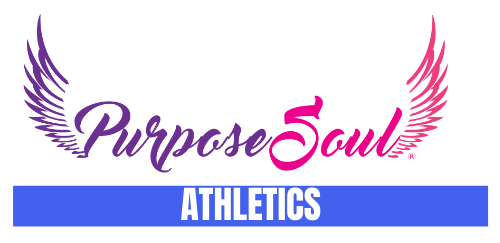Image by 3D Animation Production Company from Pixabay
Just before the start of the 2024 NFL season, it was announced that Kansas City Chiefs running back Clyde Edwards-Helaire would miss at least four games due to struggles with PTSD.
In late July, he posted this on his X account:
Living With PTSD is no small feat, its hard and very overwhelming . Within the last month Ive Had many flare ups and the Amazing staff here at the #Chiefs have been helping me get through some tough times.
I’ll be back rolling next Practice! All Love , Glydro— GLYDE (@Clydro_22) July 29, 2024
Edwards-Helaire says that the struggles with PTSD began on December 22, 2018. While he was still attending LSU, he and a friend found themselves in a self-defense situation.
Clyde Edwards-Helaire Shares Why He’s Taking a Break to Address PTSD
“I would say that’s probably where a majority of things stem from,” said Edwards-Helaire. “I wouldn’t necessarily say everything stemmed from that. I have best friends that passed away at young ages from gun violence and just not being in the right places at the right time and just knowing that I have people that are close to me or around me who … could be in the same spots that I am.”

He went on to say, “My first couple of years, you just try to block everything out and it’s like, ‘Oh, at some point I’m going to get over it. And you start to realize that that just doesn’t happen. You get older and you realize, ‘Hey, no matter the age, no matter the person, no matter the situation, everyone needs help at some point.
It takes courage to talk about it and having PTSD and dealing with it once people kind of bring it up, it is not something that I’d always want to talk about. I never really know how my body will react or my mind, it is just something that I can’t really pinpoint or know exactly what’s going to happen.
“I feel like talking is a big thing, but it is just getting over that hump personally, being able to know that honestly, just everybody goes through things good [and] bad … It’s a steppingstone. I’m just 25 years old and trying to live the rest of my life healthy.'”
I celebrate Edwards-Healire for being so open about his experiences and his battle with PTSD. I also acknowledge the Kansas City Chiefs for giving him the space to feel safe enough to publicly voice what he’s facing.
Another note on Clyde Edwards-Helaire landing on NFI: Teams are not obligated to pay weekly salaries for players on NFI.
The Chiefs will keep Clyde on the payroll and plan to do everything they can to support him through the process, a source shared.https://t.co/jWEkoCKJcx— Matt Derrick (@mattderrick) September 2, 2024
What is PTSD?
As defined by SAMSHA, “Post-traumatic stress disorder (PTSD) is a real disorder that develops when a person has experienced or witnessed a scary, shocking, terrifying, or dangerous event. These stressful or traumatic events usually involve a situation where someone’s life has been threatened or severe injury has occurred. Children and adults with PTSD may feel anxious or stressed even when they are not in present danger.”
It’s also important to note here that PTSD isn’t always caused by a single event. As noted by the Cleveland Clinic, “Complex post-traumatic stress disorder (CPTSD) can result from experiencing chronic trauma, such as prolonged child abuse or domestic violence. It’s closely related to PTSD and borderline personality disorder.”
Some symptoms of PTSD re-experiencing and avoidance symptoms such as:
-
- Feeling unsafe when something triggers a memory associated with the cause of the PTSD
-
- Physical signs of stress
-
- Recurring memories, flashbacks, or dreams associated with the cause of the PTSD
-
- Heightened emotional responses
-
- Avoiding places or situations that remind you of the cause of the PTSD
-
- Avoiding thoughts or feelings that remind you of the cause of the PTSD
How do you release internal emotions?
As Edwards-Helaire said, sometimes you can’t just block things out and eventually get over it. This goes for trauma like PTSD or events that cause you deep stress, anger, or hurt. In other words, your pain doesn’t have to be associated with a disorder in order for it to disrupt your life.
Sometimes, you can try not to think about things that impacted you, however, even if you do your very best to think positively and try to forget or ignore the situation(s) that are bothering you, they don’t just disappear.
“As long as you keep secrets and suppress information, you are fundamentally at war with yourself…The critical issue is allowing yourself to know what you know. That takes an enormous amount of courage.” – Bessel A. van der Kolk, The Body Keeps the Score: Brain, Mind, and Body in the Healing of Trauma
In my experience, the only way to lessen trauma, anger, sadness, etc. is to face it so you can release it and begin to heal.
Sometimes you can’t just think your way through it. You have to do a holistic cleansing so to speak.
Just last week, I helped a young man begin to release anger and disappointment that he had been carrying around for years. He is seeing a therapist but needed a little more coaching so he came to me. I helped him talk through the incidents and the truth of what he was feeling.
In addition to providing him with a safe space to speak about what was on his mind, I was also able to provide him with a couple of tools. As always, I asked if he was interested in learning the tools first. I ask this because sometimes the individual just needs to be heard and validated. Sometimes that’s enough for them to find relief. In this case, the person was ready to try something new.
One of the tools we used was a method called EFT or Tapping. Before the exercise, on a scale of 1-10, his level of stress and anger was a 7. After the tapping exercise, it was a 4. He said it felt like a huge weight was lifted off of him because he was able to let go of some of the anger he had been carrying around and trying to ignore.
If you’re walking around with something and thinking it’ll eventually not bother you anymore, yet it is disrupting your life, it might be time to explore alternative ways of healing and letting go. Your first step is to give yourself permission to be human, have feelings, and have a unique healing timeframe for this specific situation. Then, ask for help. Those two steps alone can be the beginning of tremendous relief.
Are you interested in incorporating holistic strategies to help you feel at peace while you’re striving to be your best and perform at your best? Our programs and workshops are designed to equip individuals, teams, and organizations with the tools they need to excel. We personalize programs for your specific needs. From 1-1 Coaching to Group Programs, we have you covered. Contact us here to learn more.
Affirmations to Help You Face Your Inner Emotions and Struggles
-
- I am safe and capable of handling my emotions.
-
- I release the past and embrace the present moment.
-
- It’s okay to feel my emotions.
-
- I am worthy of love and happiness.
-
- I am healing and growing stronger every day.
-
- Even though I’m still holding on to this memory that caused me hurt and trauma, I can face it and heal little by little.
-
- Even though this situation still hurts me, or angers me, I love and accept myself and all of my feelings.



